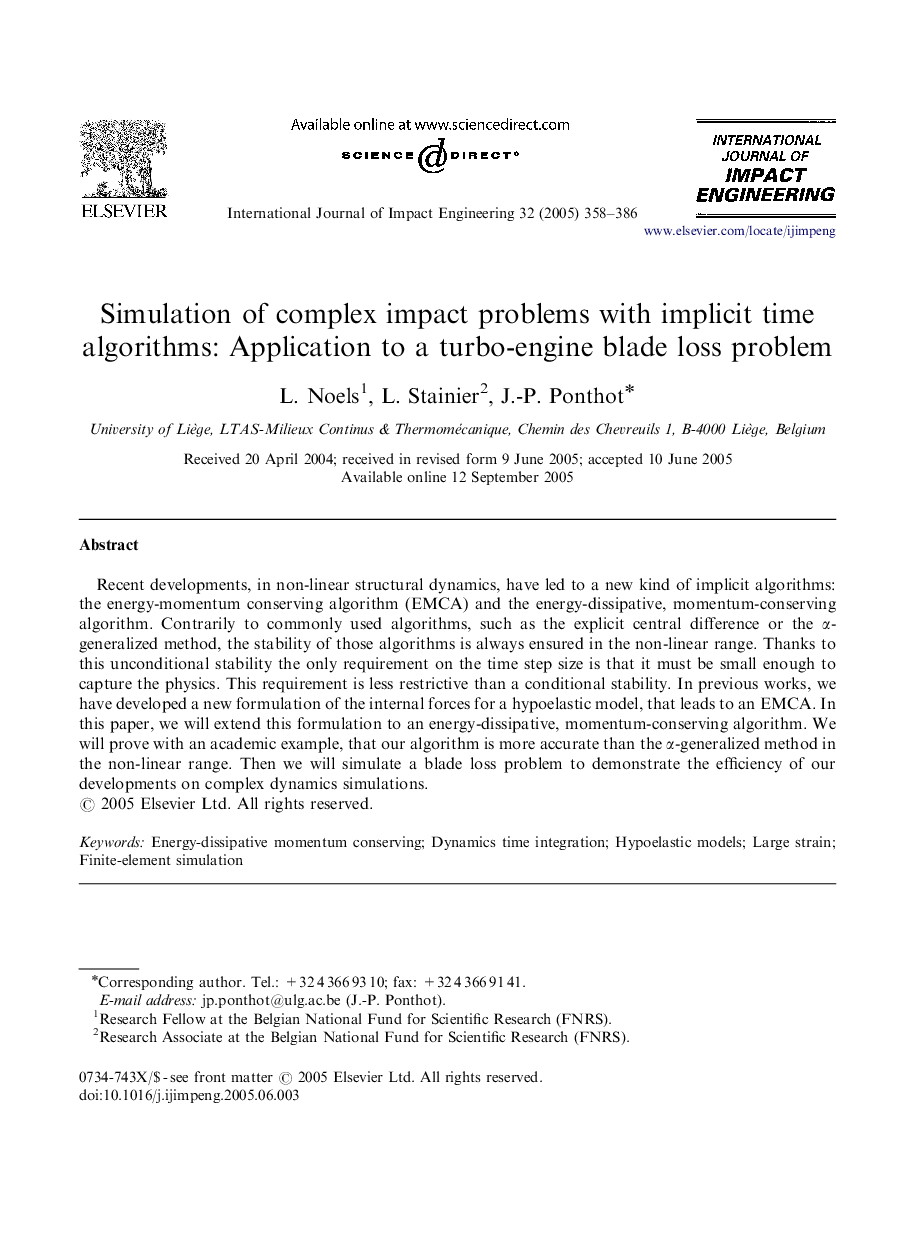| Article ID | Journal | Published Year | Pages | File Type |
|---|---|---|---|---|
| 9704657 | International Journal of Impact Engineering | 2005 | 29 Pages |
Abstract
Recent developments, in non-linear structural dynamics, have led to a new kind of implicit algorithms: the energy-momentum conserving algorithm (EMCA) and the energy-dissipative, momentum-conserving algorithm. Contrarily to commonly used algorithms, such as the explicit central difference or the α-generalized method, the stability of those algorithms is always ensured in the non-linear range. Thanks to this unconditional stability the only requirement on the time step size is that it must be small enough to capture the physics. This requirement is less restrictive than a conditional stability. In previous works, we have developed a new formulation of the internal forces for a hypoelastic model, that leads to an EMCA. In this paper, we will extend this formulation to an energy-dissipative, momentum-conserving algorithm. We will prove with an academic example, that our algorithm is more accurate than the α-generalized method in the non-linear range. Then we will simulate a blade loss problem to demonstrate the efficiency of our developments on complex dynamics simulations.
Related Topics
Physical Sciences and Engineering
Engineering
Mechanical Engineering
Authors
L. Noels, L. Stainier, J.-P. Ponthot,
